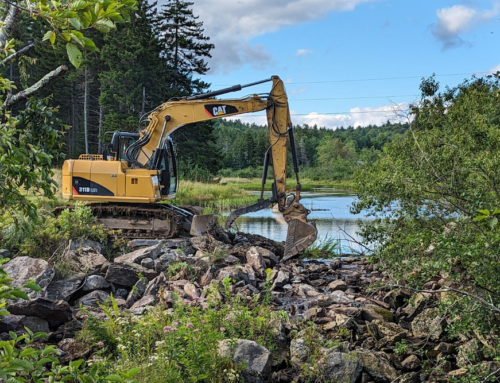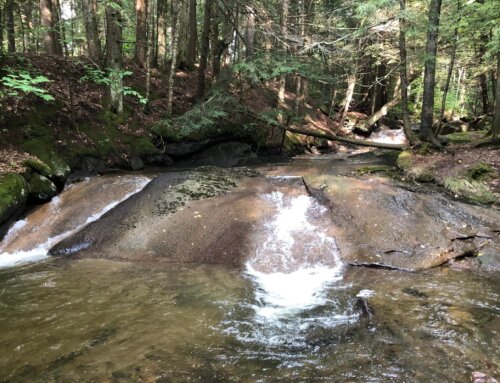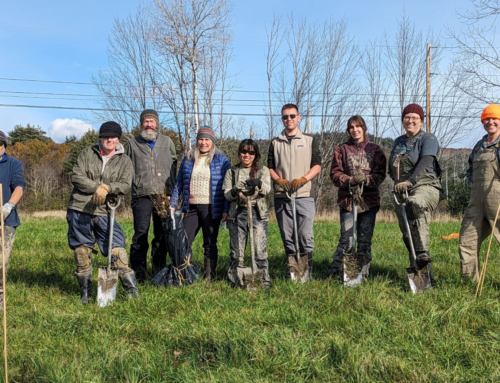Connecticut River partners working together to address invasive aquatic plant, hydrilla verticallata.
Problem Scope
In the last few years, thick mats of the invasive aquatic plant, hydrilla (hydrilla verticillata), have inhibited access for boaters, anglers, and other recreationists on the Connecticut River. Marinas and municipalities have reported that they can no longer access boat slips and docks due to the severity of the hydrilla infestations, limiting business opportunity. Hydrilla is a threat to the economic and environmental integrity of the Connecticut River valley.
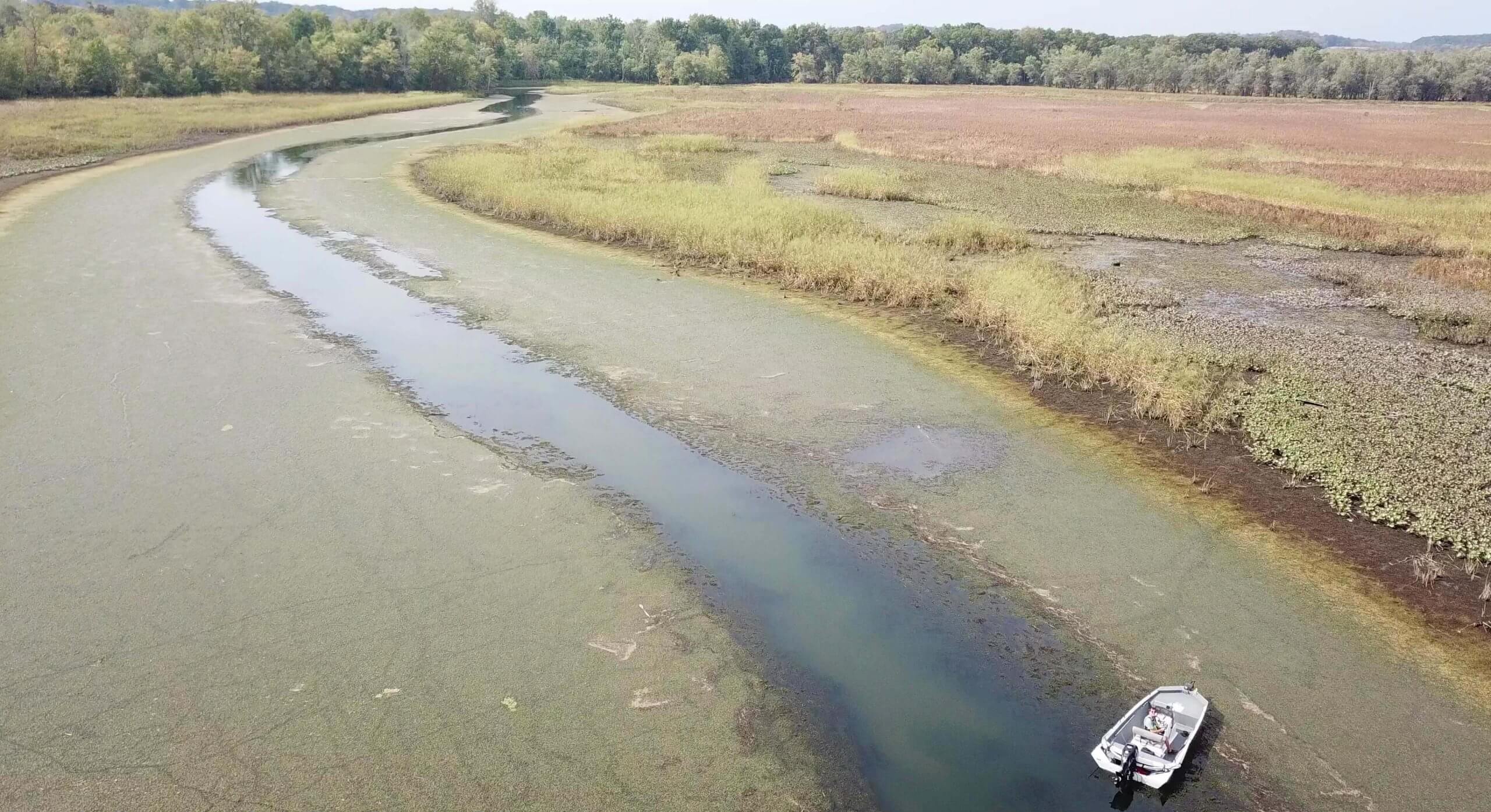
Image by Connecticut Agriculture Experiment Station
Hydrilla is a federally listed invasive aquatic plant first identified in the Connecticut River in 2016 in Glastonbury, CT. In 2018 The Northeast Aquatic Nuisance Species Panel (NEANS) and partner organizations from throughout New England conducted a cursory survey of the Connecticut River and genetic testing of suspected Hydrilla samples through the University of Wisconsin. The submitted samples were identified as a new genotype to the United States of Hydrilla verticillata. In 2019 and 2020, the Connecticut Agriculture Experiment Station (CAES) surveyed the Connecticut River from the Long Island Sound to Agawam, MA, reporting 774 acres of hydrilla (see map for details). This year, the Northeast Aquatic Nuisance Species Panel (NEANS) is continuing to survey the northern parts of the Connecticut River (Massachusetts, Vermont, and New Hampshire) using a similar method.
Hydrilla outcompetes native plants and, as a result, replaces habitat for sensitive animal species, including migratory fish. Researchers recently discovered that hydrilla infestations can host a novel cyanobacterium that, when exposed to bromide (generally associated with human pollution), can produce a neurotoxin that is deadly to animals such as bald eagles[1]. Hydrilla spreads when fragments of the plant become detached and re-root in other parts of the river in new waterbodies, when transported by boats, aquatic gear, or waterfowl.
What’s Being Done
In 2019, the Lower Connecticut River Valley Council of Governments (RiverCOG) applied for an urgent 12 Connecticut River town Connecticut Resource Conservation and Development (CT RC&D) Environmental Review Team (ERT) review of the ever-worsening Hydrilla infestation. The program funded guided research and input from scientists and stakeholders and sought additional funding to evaluate hydrilla’s environmental and economic impact on the 12 towns of the Lower Connecticut River. Funding for the 2019 CAES survey of the Connecticut River Gateway Zone was funded through the Connecticut River Gateway Commission and the Eightmile Wild and Scenic Watershed. This process culminated in a series of education webinars in June 2020. To further public education, CT RC&D designed and produced a short documentary to generate awareness of hydrilla in the Connecticut River. The final Hydrilla ERT report will be release in May 2021.
In 2020, Connecticut River stakeholders, led by the Northeast Aquatic Nuisance Species Panel (NEANS), completed a Five-Year Management Plan; this plan will be updated on an annual basis.
In April 2021, a coalition of stakeholders met to discuss action items and next steps to prevent the spread of hydrilla and mitigate or eradicate the existing infestation. This partnership includes grassroots groups, nonprofit organizations, local, state, and federal government agency representatives, marine trades representatives, biologists, and state legislators. Following this first meeting, the group determined to:
- Identify and implement pilot projects to study potential management options.
- CAES, the Connecticut River Conservancy, and RiverCOG will carry out pilot projects and monitoring in the summer of 2021.
- Develop education and outreach materials to distribute to marinas, boaters, and the general public.
- Engage state and federal legislators to secure funding and legislation to manage the hydrilla infestation throughout the Connecticut River and prevent it from spreading to other Connecticut waterbodies.
- Continue to identify and apply for funding to manage hydrilla.
What You Can Do
Boaters, anglers and anyone visiting rivers and lakes should become familiar with identifying hydrilla. Those using paddle boats, power boats, jet skis, and fishing equipment in the Connecticut River must clean, drain and dry their equipment to ensure that hydrilla does not spread to new waterbodies. Where you encounter hydrilla infestations, avoid these locations and do not disturb or remove the plants, which will increase the spread of hydrilla.
Volunteer with CT Department of Energy and Environmental Protection Boating Division as an Invasive Species Boat Launch Monitor and receive training on how to engage with boaters to ensure hydrilla and other aquatic invasive species are not travelling to and from the Connecticut River. Learn more at: https://portal.ct.gov/DEEP/Invasive-Species
Share information about hydrilla with your local communities. The short documentary, Invading the CT River – the Spread of Hydrilla, can be screened at meetings and community events, on display monitors and shared online.
Residents in Connecticut can also contact their municipal leaders as well as state and federal representatives to advocate for legislative action and funding for hydrilla management.
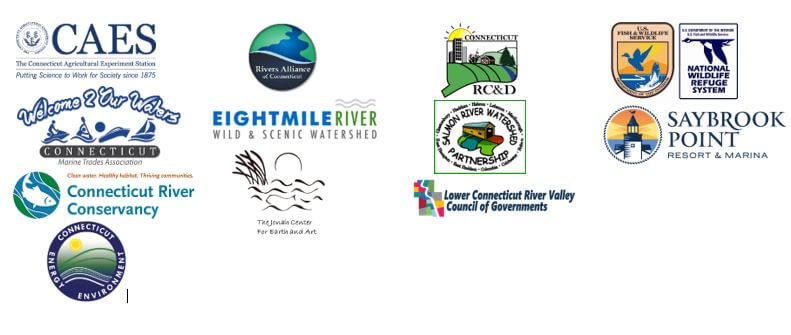
[1] https://science.sciencemag.org/content/371/6536/eaax9050




